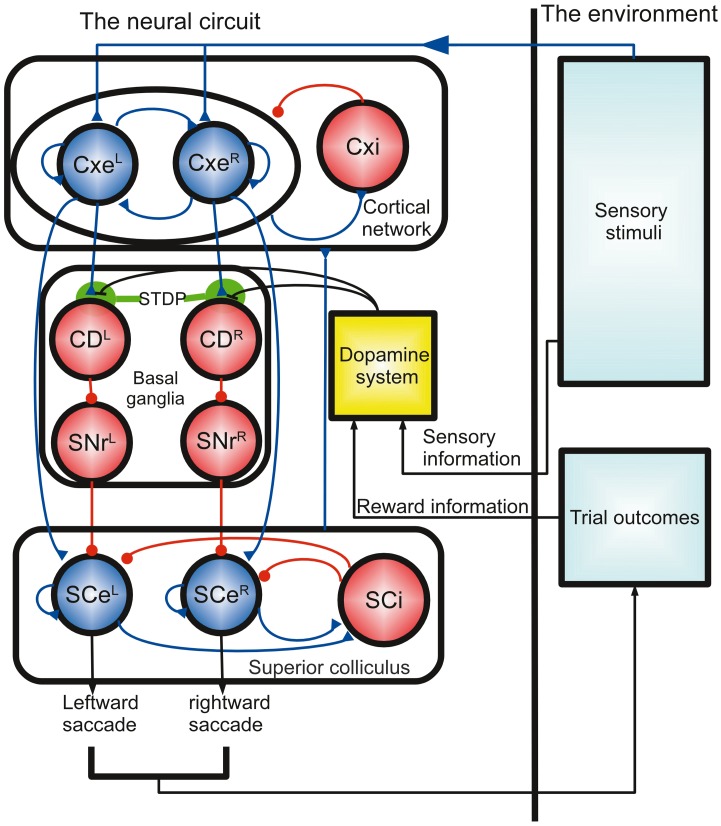Figure 1.
Schematics of the computational model of decision optimization and adaptation for the random-dot direction discrimination task. The model is described by a close loop process that involves a neural circuit based on a dopamine system and a previously described cortico-basal ganglia circuit model (Lo and Wang, 2006). The neural circuit receives sensory input, accumulates sensory evidence (random dot movements), detects the threshold crossing, and then makes a decision (saccadic eye movements). The outcome of the decision determines the reward and thereby influences the dopamine system. The dopamine activity modulates the decision process by changing the Cx-CD synaptic strength through spike-timing dependent plasticity (STDP). Each circle represents a population of leaky integrate-and-fire neurons, and the dopamine system is a functional unit that is modeled by several equations. Cx, cortex; Cxe, excitatory cortical pyramidal neurons; Cxi, inhibitory cortical interneurons; CD, caudate nucleus; SNr, substantia nigra pars reticulata; SCe, superior colliculus excitatory neurons; SCi, superior colliculus inhibitory neurons. The L and R superscripts denote the neural populations responding to the left and right stimuli, respectively.

